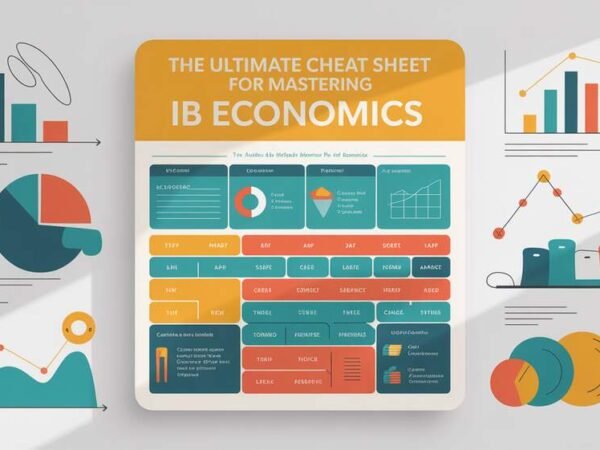What Is Classroom 15x?
Classroom 15x is a transformative concept in education that aims to redefine learning in the modern era. Unlike traditional classrooms that rely heavily on static environments and outdated teaching methodologies, Classroom 15x introduces a dynamic, tech-enhanced, student-centered framework. The “15x” signifies exponential growth in educational outcomes, student engagement, and instructional efficiency. The term suggests a multiplier effect where learning becomes more impactful and scalable. As digital transformation continues to touch every aspect of our lives, the education sector is undergoing rapid change, and Classroom 15x is at the forefront of this evolution. Born out of the need to adapt to the ever-increasing demands of learners and the workforce, it is quickly gaining attention globally among educators, policymakers, and technologists.
Core Principles Behind Classroom 15x
At the heart of Classroom 15x lies a set of foundational principles designed to revolutionize how students interact with knowledge. One of the core tenets is a tech-integrated, student-first design. Rather than treating technology as an add-on, Classroom 15x weaves digital tools seamlessly into the learning experience. Another crucial principle is data-driven personalization. AI algorithms analyze student behavior, performance, and preferences to tailor lessons in real-time, ensuring every learner receives the support they need. Real-time feedback loops empower students and teachers to course-correct immediately, fostering a more effective and responsive learning environment. Lastly, Classroom 15x is built with scalability and sustainability in mind. Whether it’s a classroom in a metropolitan city or a rural area, the infrastructure can adapt without sacrificing quality.
How Classroom 15x Transforms Traditional Learning
The traditional teacher-centered model often limits creativity and independent thinking. Classroom 15x flips this dynamic by emphasizing learner-driven instruction. Students lead their educational journeys, guided by facilitators who provide resources and mentorship rather than just lectures. This approach nurtures critical thinking, collaboration, and self-motivation. Classroom 15x is also designed to function seamlessly across different learning modalities—in-person, hybrid, and remote. Integrating cloud technologies and smart devices ensures students have continuous access to learning materials and interaction opportunities, regardless of location. With interactive whiteboards, gamified apps, and collaborative digital platforms, the learning experience becomes far more engaging and intuitive.
Classroom 15x Technology Stack
A robust technological foundation supports the Classroom 15x model. AI-powered platforms assess learning patterns and suggest content suited to each student’s interest level. Augmented Reality (AR) and Virtual Reality (VR) allow students to explore historical sites, conduct scientific experiments, or even simulate business environments, all within a safe, virtual space. Cloud-based collaboration tools facilitate seamless communication and file-sharing among students and educators, promoting transparency and real-time cooperation. Smart boards and IoT devices enhance interactivity and provide educators valuable insights into student engagement and participation. Wearable edtech like brainwave monitors or attention trackers helps identify stress points and optimize the learning rhythm based on biometric feedback.
Benefits of Implementing Classroom 15x
The Classroom 15x model promises significant advantages for students, teachers, and institutions. One of the most talked-about claims is the potential for a 15x increase in engagement. While this figure is aspirational, schools implementing similar models report noticeable student participation and enthusiasm spikes. Academic performance often improves due to personalized attention and continuous feedback loops. Moreover, the immersive, interactive design of Classroom 15x helps improve knowledge retention compared to conventional methods. Emotional intelligence, social collaboration, and communication skills are boosted as learners are consistently involved in group projects and real-world problem-solving scenarios.
Barriers to Adoption and How to Overcome Them
Despite its promise, the transition to Classroom 15x is not without challenges. Infrastructure and budgetary constraints remain the most significant hurdles, especially for underfunded institutions. However, partnerships with tech companies and government grants can ease financial burdens. Another major challenge is resistance to change, particularly from educators accustomed to traditional teaching methods. This can be mitigated through structured professional development programs and peer mentoring. Digital literacy gaps must also be addressed to ensure teachers and students can effectively utilize new tools. Establishing a continuous learning and adaptability culture is key to overcoming these barriers.
Real-World Examples and Case Studies
Numerous schools and educational districts across the globe are already embracing the Classroom 15x model. For instance, several Scandinavian institutions have adopted modular, tech-rich learning environments that mirror the Classroom 15x philosophy. These schools report improved student outcomes, reduced dropout rates, and higher teacher satisfaction. In the U.S., California, and New York, pilot programs have tested the model with promising results. Teachers note increased student engagement, and parents appreciate the transparency and real-time updates about their children’s progress. These early adopters are blueprints for broader implementation, offering valuable lessons and best practices.
Step-by-Step Guide to Transitioning into Classroom 15x
Making the shift to Classroom 15x requires careful planning and execution. Begin with a comprehensive audit of your current learning environment, assessing technological readiness and instructional practices. Next, choose the right platforms and tools that align with your educational goals. Engage stakeholders early in the process to foster buy-in. Staff training is essential; it offers workshops, webinars, and hands-on practice sessions to help educators become comfortable with new systems. Start with a pilot program in select classrooms to test the implementation strategy, gather feedback, and make adjustments before scaling. Regular monitoring and iteration will ensure continuous improvement and long-term success.
Future of Education with Classroom 15x
Classroom 15x is not just a fleeting trend; it represents a fundamental shift in how education is conceived and delivered. We can expect even deeper integration with emerging technologies like blockchain for secure credentialing and quantum computing for complex data analysis. The role of educators will evolve into that of facilitators and mentors, guiding learners through personalized educational journeys. As the global education system becomes more interconnected, Classroom 15x can serve as a universal model adaptable to different cultures, languages, and learning needs. It holds the potential to level the playing field and bring quality education to every corner of the world.
Conclusion
In conclusion, Classroom 15x is more than a concept—a movement toward more innovative, inclusive, and practical education. By leveraging technology, personalizing learning, and creating adaptable environments, it addresses the limitations of traditional systems while preparing students for a rapidly evolving future. Schools and institutions embracing this evolution benefit from increased engagement, better outcomes, and a stronger connection between learning and the real world. The time to act is now. Join the Classroom 15x movement and be part of the future of education. Future-proof your classroom and inspire the next generation of thinkers, creators, and leaders.
Do Read: Best Quran Memorization Course: What to Look for in an Effective Program













